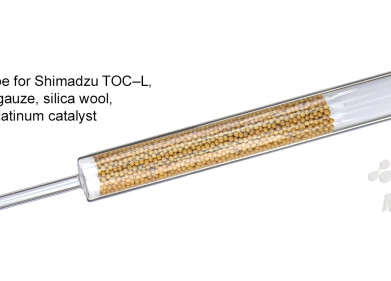Laboratory Products
New Technology Sheds Light on Salmonella and Listeria
Jul 11 2019
Nemis Technologies Ltd is excited to announce the recent publication of its research work on the innovative, ultra-sensitive chemiluminescence-based technology for the detection of Salmonella and Listeria monocytogenes has been published in the prestigious journal Angewandte Chemie.
In the journal, a team of scientists from Tel Aviv University (Professor Doron Shabat), The Zürich University of Applied Sciences (Professor Lars Fieseler), Nemis Technologies AG and Biosynth AG have introduced a new, ultrasensitive, chemiluminescence-based method for the direct detection of Salmonella and Listeria monocytogenes. The study is titled ’Ultrasensitive Detection of Salmonella and Listeria monocytogenes by Small-molecule Chemiluminescence Probes’.
The method is based on chemiluminescence, the emission of light resulting from a chemical process. The simplicity of the tests allows for both enrichment of the bacteria and their detection in a test tube, with no further sample preparation and therefore, no containment laboratory is required. The chemiluminescence probes have proven to be about 600 times more sensitive than conventional fluorescence probes.
The success of this technique is due to specially developed molecular probes combining a luminescent substance (a phenoxy-dioxetane) with a ‘trigger’. In this form the probe does not light up. The trigger is tailored to the bacteria to be detected; it is recognised by a specific enzyme produced by the pathogen - a special esterase in the case of salmonella and a special phospholipase C for listeria - that splits it from the luminescent part.
This enzyme initiates a chemical reaction that causes the luminescent molecule to split and emit a very intense green light. Tests with various bacteria demonstrated that the probe tailored to the Listeria test only reacts to Listeria monocytogenes, not to other, non-pathogenic, strains of Listeria. The sensitivity of the test allows first results after six to eight hours and same day detection can be achieved even with dried bacteria from food industry surface materials, such as stainless steel.
Arnaud Muller, the company’s CEO, stated: “Excited by these findings; a great teamwork in developing our innovative technology. We are confident that our new method will be used more broadly to develop specific chemiluminescence probes relevant for the detection of a wide range of bacteria and point-of-care diagnostics. Additional detection kits are currently under development at Nemis.“
Digital Edition
Lab Asia 31.2 April 2024
April 2024
In This Edition Chromatography Articles - Approaches to troubleshooting an SPE method for the analysis of oligonucleotides (pt i) - High-precision liquid flow processes demand full fluidic c...
View all digital editions
Events
Apr 22 2024 Marrakech, Morroco
Making Pharmaceuticals Exhibition & Conference
Apr 23 2024 Coventry, UK
Apr 23 2024 Kintex, South Korea
Apr 23 2024 Seoul, South Korea
Apr 24 2024 Jakarta, Indonesia

.jpg)











.jpg)




